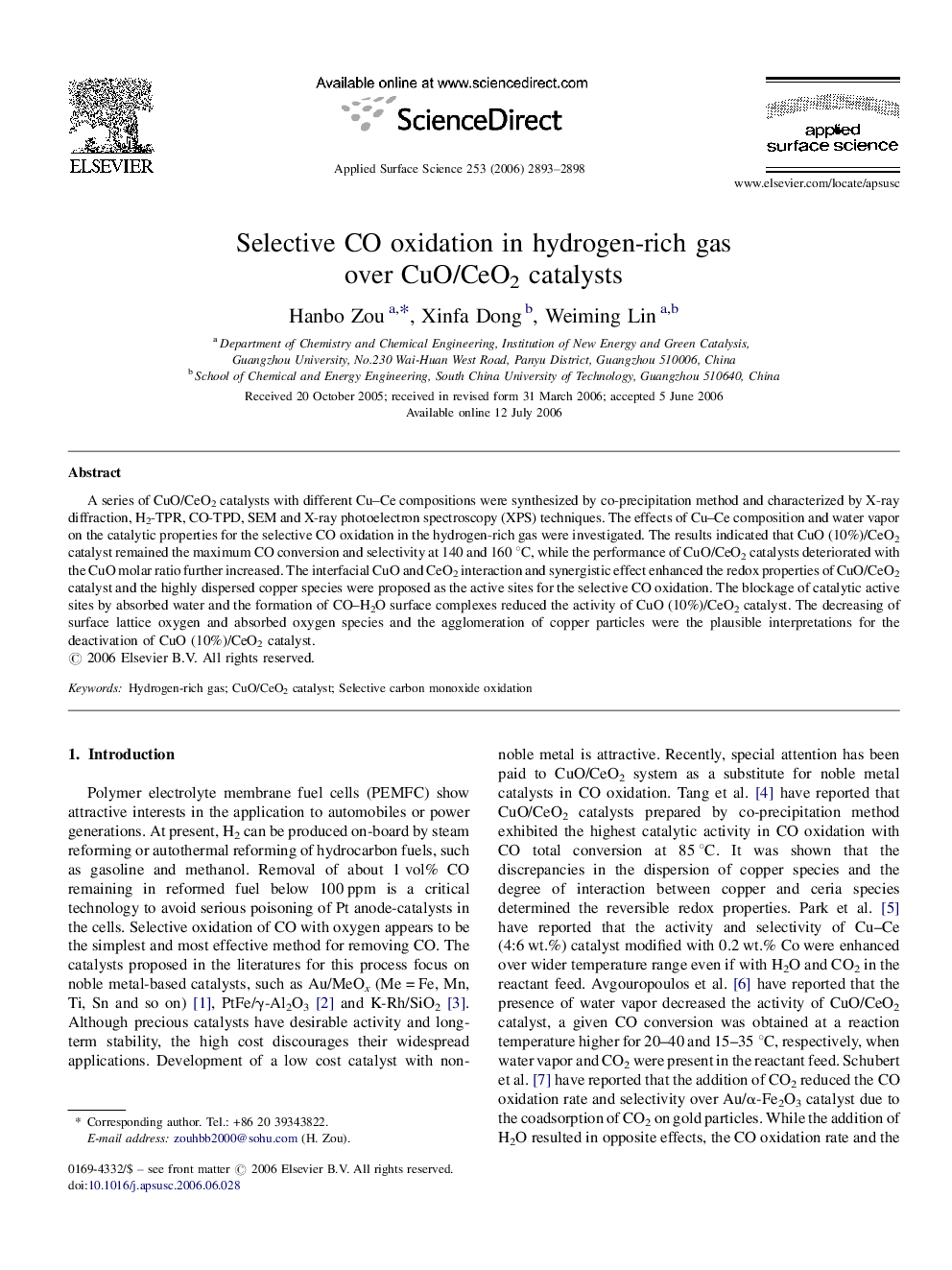| Article ID | Journal | Published Year | Pages | File Type |
|---|---|---|---|---|
| 5369980 | Applied Surface Science | 2006 | 6 Pages |
A series of CuO/CeO2 catalysts with different Cu-Ce compositions were synthesized by co-precipitation method and characterized by X-ray diffraction, H2-TPR, CO-TPD, SEM and X-ray photoelectron spectroscopy (XPS) techniques. The effects of Cu-Ce composition and water vapor on the catalytic properties for the selective CO oxidation in the hydrogen-rich gas were investigated. The results indicated that CuO (10%)/CeO2 catalyst remained the maximum CO conversion and selectivity at 140 and 160 °C, while the performance of CuO/CeO2 catalysts deteriorated with the CuO molar ratio further increased. The interfacial CuO and CeO2 interaction and synergistic effect enhanced the redox properties of CuO/CeO2 catalyst and the highly dispersed copper species were proposed as the active sites for the selective CO oxidation. The blockage of catalytic active sites by absorbed water and the formation of CO-H2O surface complexes reduced the activity of CuO (10%)/CeO2 catalyst. The decreasing of surface lattice oxygen and absorbed oxygen species and the agglomeration of copper particles were the plausible interpretations for the deactivation of CuO (10%)/CeO2 catalyst.
